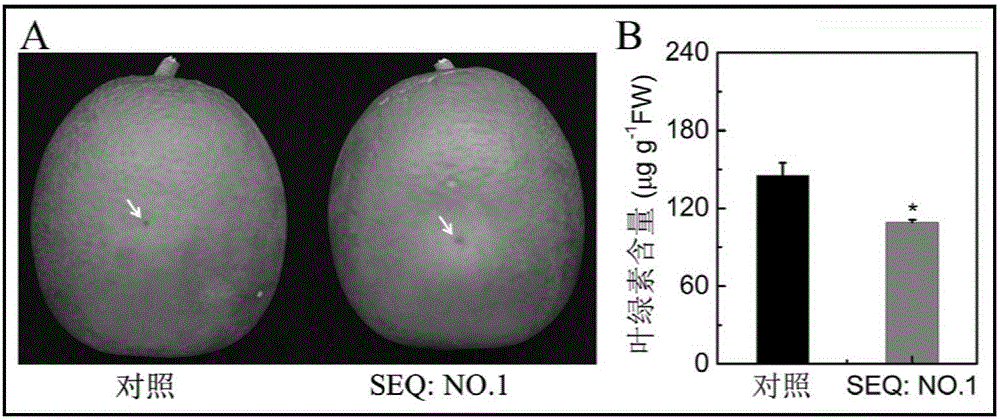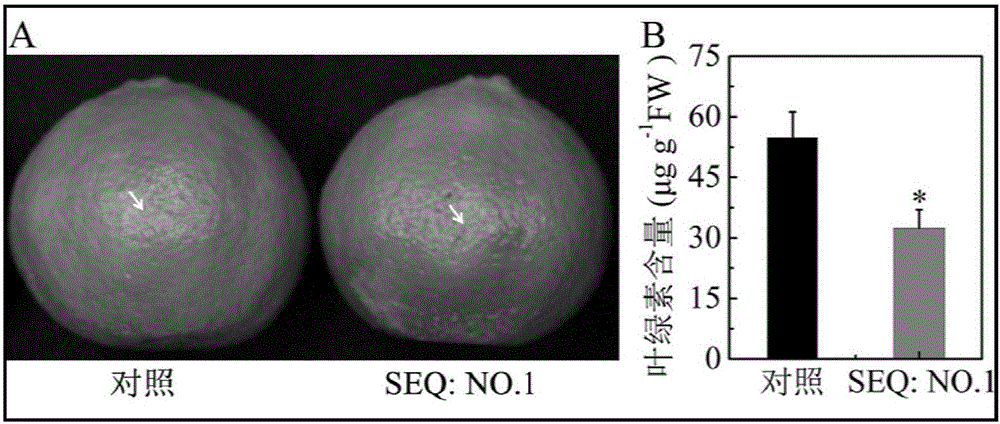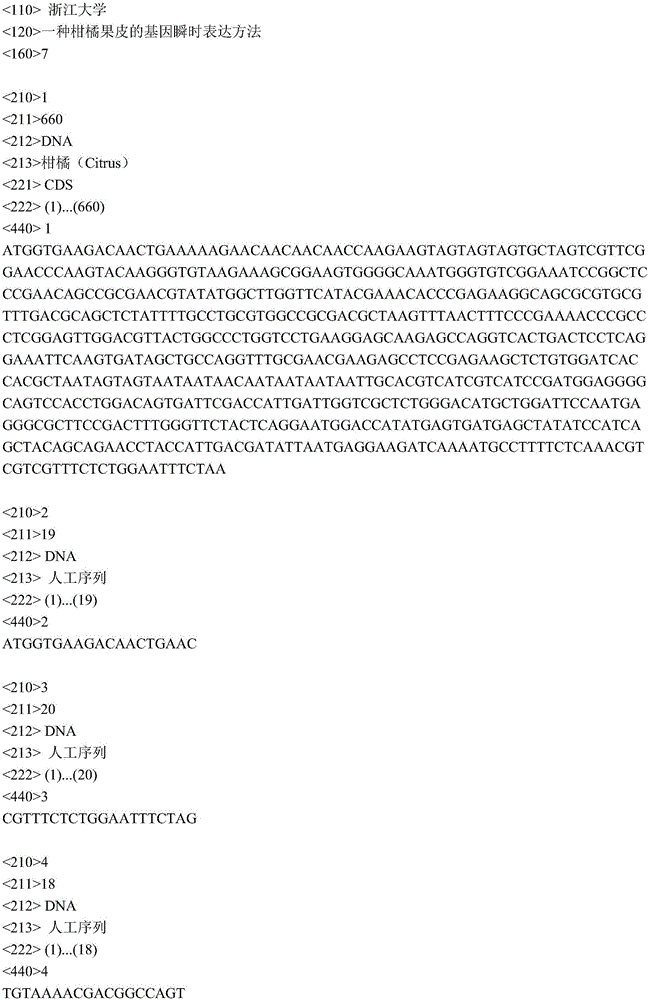Gene transient expression method of citrus peel
A technology of transient expression and citrus peel, applied in the field of bioengineering, can solve the problems of long cycle, complicated operation, and difficulty in obtaining positive transgenic plants, and achieve the effect of reasonable design and convenient and simple operation
- Summary
- Abstract
- Description
- Claims
- Application Information
AI Technical Summary
Problems solved by technology
Method used
Image
Examples
Embodiment 1
[0015] Embodiment 1: Citrus peel CitERF13 gene is transiently expressed in sweet orange peel
[0016] 1. Extraction of RNA and synthesis of cDNA: the extraction of total RNA from different tissues and organs of citrus (stem, leaf, flower, fruit) was carried out by CTAB method, and TURBO DNase (Ambion, USA) was used to remove genomic DNA contamination, and then 1.0 μg RNA was reverse-transcribed into cDNA with iScript cDNA Synthesis Kit (Bio-Rad, USA) for future use, and specific operations were performed according to the instructions.
[0017] 2. Construction of expression vectors: Based on the Sweet Orange and Clementine Citrus Genome Database (http: / / www.citrusgenomedb.org), BLAST (TBLASTN and BLASTP) analysis to obtain CitERF13 (SEQ: NO.1) related to chlorophyll degradation. The gene was amplified by using PCR technology and primer pair SEQ: NO.2 and SEQ: NO.3, and further verified by sequencing means. The open reading frame of the gene was amplified according to the conf...
Embodiment 2
[0020] Example 2: Transient expression of Citrus peel CitERF13 gene in Ponkan peel
[0021] Whole steps are the same as in Example 1, and the injected fruit is the ponkan peel.
[0022] Transient expression experiment was carried out by taking Ponkan fruit 160 days after the full flowering stage. After 5 days of injection, the pericarp phenotype and chlorophyll content are as attached figure 2 , compared with the control, the degradation of chlorophyll in the pericarp injected with CitERF13 was significantly enhanced. The samples of pericarp tissue in the Agrobacterium-infiltrated area were collected, and it was found that the chlorophyll content of the pericarp injected with CitERF13 was significantly lower than that of the negative control
[0023] The present invention uses the citrus genome database to isolate and obtain CitERF13 related to chlorophyll degradation, load it on the pGreen II 0029 62-SK expression vector, and introduce it into Agrobacterium GV3101::pSoup, ...
PUM
 Login to View More
Login to View More Abstract
Description
Claims
Application Information
 Login to View More
Login to View More - R&D
- Intellectual Property
- Life Sciences
- Materials
- Tech Scout
- Unparalleled Data Quality
- Higher Quality Content
- 60% Fewer Hallucinations
Browse by: Latest US Patents, China's latest patents, Technical Efficacy Thesaurus, Application Domain, Technology Topic, Popular Technical Reports.
© 2025 PatSnap. All rights reserved.Legal|Privacy policy|Modern Slavery Act Transparency Statement|Sitemap|About US| Contact US: help@patsnap.com



